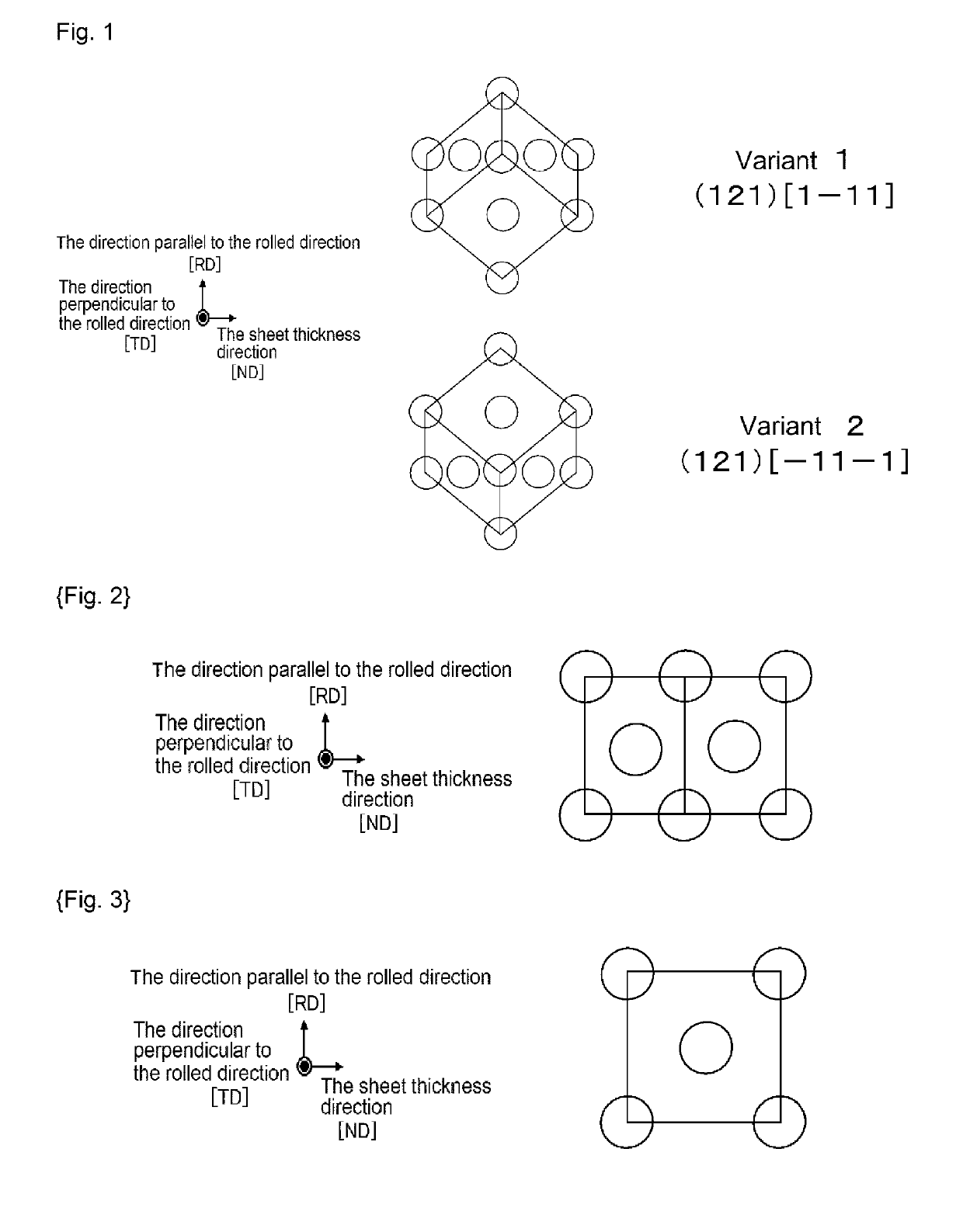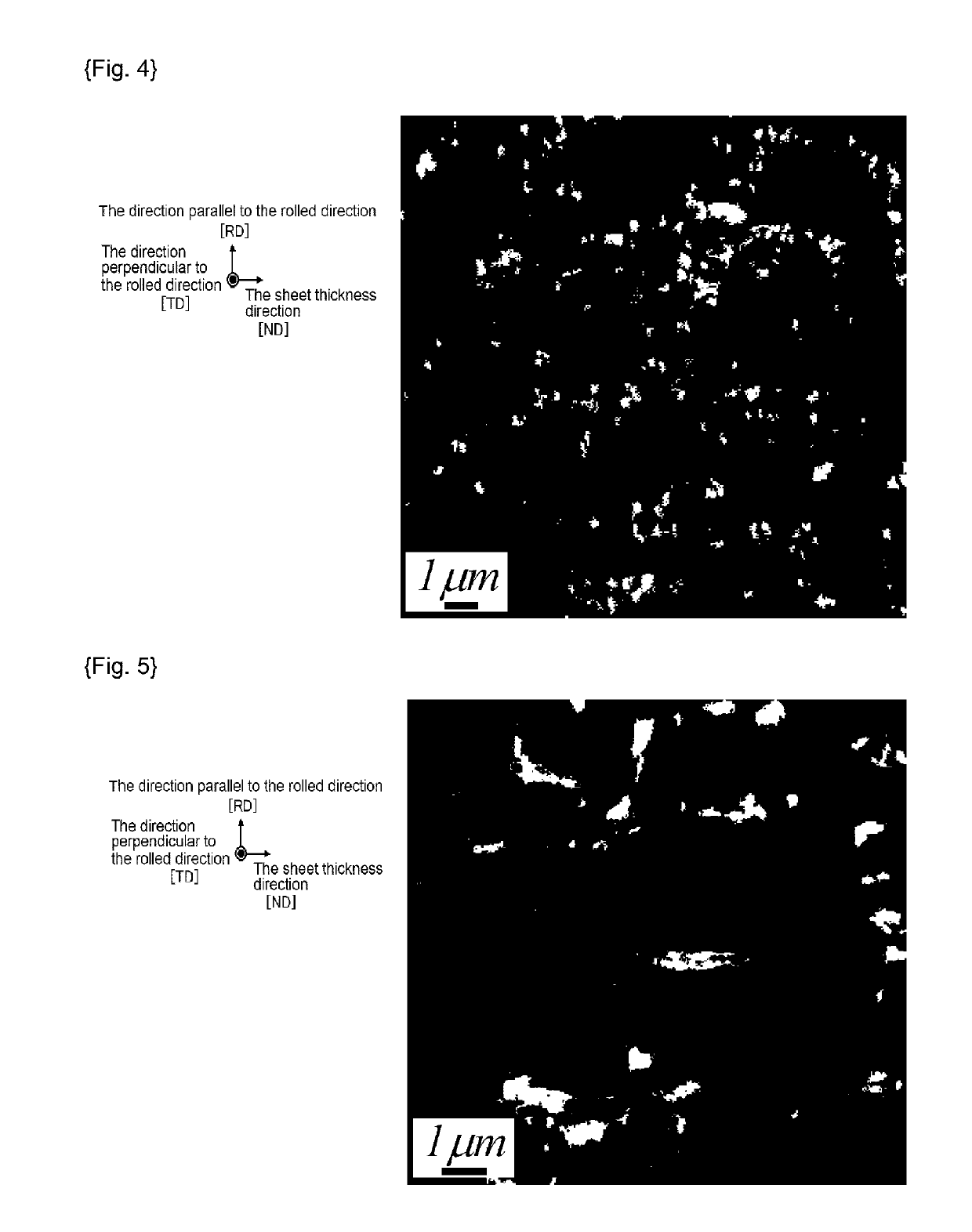Copper alloy sheet material, connector, and method of producing a copper alloy sheet material
a technology of copper alloy sheet material and copper alloy sheet, which is applied in the direction of conductive materials, metal/alloy conductors, and conductors, etc., can solve the problems of permanent deformation of the material, increased contact resistance, and inability to obtain the desired contact pressure as a spring, etc., to achieve satisfactory bending workability, satisfactory electrical conductivity, and high yield strength
- Summary
- Abstract
- Description
- Claims
- Application Information
AI Technical Summary
Benefits of technology
Problems solved by technology
Method used
Image
Examples
example 1
[0080]Raw materials of each alloy containing the alloying elements described in Table 1, with the balance being Cu and unavoidable impurities, were melted with a high-frequency melting furnace, and this was cast to obtain an ingot. The ingot was subjected to rollings at the rolling ratios described in the following steps, and thereby the size of the ingot was set to obtain the final sheet thickness (0.10 mm) without contradiction. Then, specimens of copper alloy sheet materials of Examples according to this invention and of Comparative Examples apart from those Examples, were respectively produced, by any one of the following production methods A, B, D, and E. Table 1 shows which production method among the methods A, B, D, and E was used. The final thickness of the copper alloy sheet material was set to 0.10 mm (100 μm). This final sheet thickness is also the same in the cases of production methods J, K, L, and M that will be described below, unless otherwise specified. The numbers...
example 2
[0104]Copper alloy sheet materials were produced using the copper alloys described in Table 2, and characteristics thereof were evaluated, by the same production methods and the same test and measurement methods as those used in Example 1. The results are presented in Table 2.
[0105]
TABLE 2NiCoSiOther{121} {110} {001} mass mass mass elementsProduction orientationorientationorientation %%%mass %MethoddensitydensitydensityExample2011.84—0.45Zr = 0.11,A5 5 1Mn = 0.062022.64—0.59Mg = 0.15A3 7 02032.421.220.89Zn = 1.92A3 8 1Ag = 0.122043.78—0.91Mg = 0.08A210 02053.251.331.02Cr = 0.15A4 9 12064.65—1.13Mg = 0.12A211 02076.41—1.55Sn = 0.22B4 9 02087.88—1.83Fe = 0.23,B510 0P = 0.05Comparative2512.64—0.59Sn = 2.12Cracks of the material were occurred in rollingExample2523.81—0.91Mg = 0.15D4 3 12533.81—0.91Mg = 0.15E3 3 12543.81—0.91Mg = 0.15J4 2322553.81—0.91Mg = 0.15K3 5 12563.81—0.91Mg = 0.15L3 5 12573.81—0.91Mg = 0.15M3 1 2Density ρ of grainsYieldElectricalhaving {110} strengthBendingconduct...
PUM
| Property | Measurement | Unit |
|---|---|---|
| Young's modulus | aaaaa | aaaaa |
| temperature | aaaaa | aaaaa |
| size | aaaaa | aaaaa |
Abstract
Description
Claims
Application Information
 Login to View More
Login to View More - R&D
- Intellectual Property
- Life Sciences
- Materials
- Tech Scout
- Unparalleled Data Quality
- Higher Quality Content
- 60% Fewer Hallucinations
Browse by: Latest US Patents, China's latest patents, Technical Efficacy Thesaurus, Application Domain, Technology Topic, Popular Technical Reports.
© 2025 PatSnap. All rights reserved.Legal|Privacy policy|Modern Slavery Act Transparency Statement|Sitemap|About US| Contact US: help@patsnap.com


